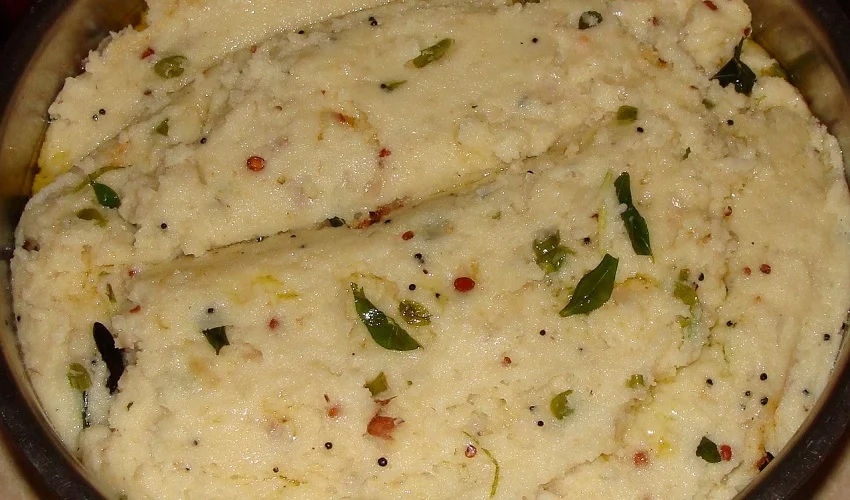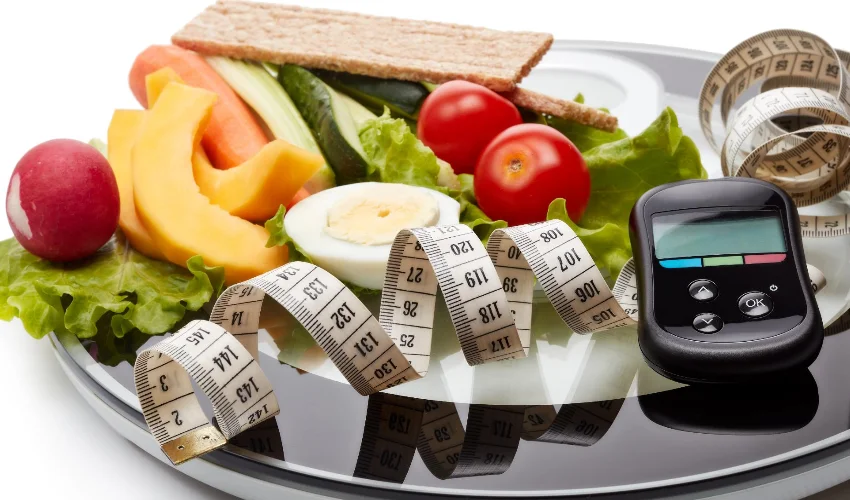What is upma?
Upma is a popular South Indian dish made from semolina or rice flour. It is typically seasoned with spices like mustard seeds, curry leaves, and green chilies, and often includes vegetables like onions, carrots, and peas. Upma is a healthy and nutritious breakfast option that is low in fat and rich in fiber. It provides a good source of carbohydrates and can be easily digested. However, for individuals with diabetes, it is important to consume upma in moderation and monitor blood sugar levels as it contains carbohydrates that can affect blood sugar levels. It is recommended to pair upma with protein-rich foods like yogurt or boiled eggs to help stabilize blood sugar levels.
What is diabetes?
Diabetes is a chronic condition that affects the body’s ability to regulate blood sugar levels. It occurs when the pancreas does not produce enough insulin or when the body cannot effectively use the insulin it produces. This leads to high levels of glucose in the blood, which can cause various health complications. Diabetes is a serious condition that requires careful management and lifestyle changes to maintain optimal blood sugar levels.
Is upma good for diabetes?
Upma is a popular Indian breakfast dish made from semolina or rice flour. It is often seasoned with spices and vegetables, making it a flavorful and nutritious option. When it comes to diabetes, upma can be a good choice for those looking to manage their blood sugar levels. The high fiber content in upma helps slow down the absorption of carbohydrates, preventing sudden spikes in blood sugar. Additionally, the complex carbohydrates in upma provide sustained energy, keeping you fuller for longer. However, it is important to keep portion sizes in check and avoid adding excessive amounts of oil or ghee while preparing upma. Overall, when consumed in moderation and as part of a balanced diet, upma can be a healthy and diabetes-friendly choice.
Nutritional Information
Calories and macronutrients in upma
Upma is a popular South Indian dish made from semolina, also known as rava or sooji. It is often consumed as a breakfast option and is known for its delicious taste and versatility. When it comes to diabetes, upma can be a good choice due to its low glycemic index. This means that it causes a slower rise in blood sugar levels compared to high glycemic index foods. Additionally, upma is rich in fiber, which helps in better blood sugar control. However, it is important to keep portion sizes in mind and choose healthier cooking methods, such as using less oil and incorporating vegetables into the dish. By doing so, upma can be a nutritious and satisfying option for individuals with diabetes.
Glycemic index of upma
The glycemic index of upma is a measure of how quickly it raises blood sugar levels. Generally, foods with a high glycemic index can cause a rapid increase in blood sugar, which is not ideal for individuals with diabetes. However, upma has a relatively low glycemic index, making it a suitable choice for people with diabetes. Its low glycemic index means that it releases glucose into the bloodstream at a slower rate, helping to maintain stable blood sugar levels. Additionally, upma is a nutritious dish that provides a good balance of carbohydrates, proteins, and fats, making it a healthy option for individuals with diabetes.
Impact of upma on blood sugar levels
Upma is a popular Indian breakfast dish made from semolina or rice flour. It is often enjoyed with a side of chutney or pickle. When it comes to its impact on blood sugar levels, upma can be a good option for individuals with diabetes. The complex carbohydrates present in semolina or rice flour are digested slowly, leading to a gradual rise in blood sugar levels. This helps in preventing sudden spikes in glucose levels, which is beneficial for people managing diabetes. However, it is important to keep portion sizes in check and pair upma with protein-rich foods to further regulate blood sugar levels. Overall, upma can be included as part of a balanced diet for individuals with diabetes.
Benefits of Upma for Diabetes
High fiber content
Upma is an excellent food option for individuals with diabetes due to its high fiber content. Fiber plays a crucial role in managing blood sugar levels as it slows down the absorption of carbohydrates. This helps prevent sudden spikes in blood sugar levels, making upma a suitable choice for those looking to control their diabetes. Additionally, the high fiber content in upma promotes a feeling of fullness, which can aid in weight management and prevent overeating. Including upma in a balanced diet can contribute to overall better blood sugar control and improved health for individuals with diabetes.
Slow release of carbohydrates
Upma is a popular Indian breakfast dish that is often consumed by people with diabetes. One of the key benefits of upma for diabetes is its slow release of carbohydrates. This means that the carbohydrates in upma are broken down and absorbed by the body at a slower pace, resulting in a gradual rise in blood sugar levels. This slow release of carbohydrates helps in maintaining stable blood sugar levels throughout the day, making upma a suitable choice for individuals with diabetes. Additionally, upma is also a good source of fiber, which further aids in controlling blood sugar levels and promoting overall digestive health.
Controlled portion size
Controlled portion size is crucial for managing diabetes, and upma can be a good option when consumed in moderation. It is important to measure the quantity of ingredients used while preparing upma to ensure that the carbohydrate intake is controlled. By keeping the portion size in check, individuals with diabetes can enjoy upma as a part of a balanced meal. Additionally, incorporating high-fiber ingredients like vegetables and whole grains in the recipe can further enhance its nutritional value and help in regulating blood sugar levels.
Considerations for Diabetics
Choice of ingredients
When it comes to making upma for diabetes, the choice of ingredients plays a crucial role. It is important to opt for whole grains like broken wheat or semolina instead of refined grains. These whole grains have a lower glycemic index, which means they are digested and absorbed more slowly, resulting in a gradual rise in blood sugar levels. Additionally, adding vegetables like carrots, peas, and bell peppers can provide essential vitamins, minerals, and fiber. It is also advisable to use minimal oil and avoid adding excessive salt or sugar. By making mindful choices of ingredients, upma can be a nutritious and diabetes-friendly option for a balanced diet.
Preparation methods
Upma is a popular South Indian dish that is often enjoyed as a breakfast or evening snack. It is made from semolina or rice flour and is known for its delicious taste and versatility. When it comes to diabetes, upma can be a good choice as it is low in glycemic index and high in fiber. The preparation methods for upma vary, but they usually involve sautéing the semolina or rice flour with spices, vegetables, and sometimes nuts. This not only adds flavor but also enhances the nutritional value of the dish. Overall, upma can be a healthy and satisfying option for individuals with diabetes when prepared using the right ingredients and portion sizes.
Portion control and moderation
Portion control and moderation are key factors to consider when including upma in a diabetes-friendly diet. While upma can be a nutritious and filling breakfast option, it is important to consume it in appropriate portions. Too much upma can lead to a spike in blood sugar levels, so it is recommended to have a small serving size. Additionally, it is crucial to balance upma with other low-glycemic index foods and include plenty of vegetables to ensure a well-rounded meal. By practicing portion control and moderation, individuals with diabetes can enjoy upma as part of a balanced diet.
Other Factors to Consider
Individual dietary needs
Individual dietary needs play a crucial role in managing diabetes effectively. When it comes to incorporating upma into a diabetic diet, it is important to consider various factors such as blood sugar levels, carbohydrate intake, and portion control. While upma can be a healthy addition to a diabetic meal plan, it is essential to choose the right ingredients and prepare it in a way that promotes stable blood sugar levels. Consulting with a registered dietitian or healthcare professional can help individuals with diabetes create a personalized meal plan that includes upma and meets their specific dietary needs.
Overall diet and lifestyle
When it comes to managing diabetes, an overall healthy diet and lifestyle are crucial. This includes making smart food choices, engaging in regular physical activity, and maintaining a healthy weight. While specific foods like upma may have some benefits for diabetes management, it is important to focus on a well-balanced diet that includes a variety of nutrient-rich foods. Additionally, consulting with a healthcare professional or registered dietitian can provide personalized guidance on the best dietary approach for managing diabetes.
Consultation with a healthcare professional
Consultation with a healthcare professional is crucial for individuals with diabetes, especially when it comes to making dietary choices. While upma can be a healthy and nutritious option for many, it is important to consult with a healthcare professional before adding it to your diet. They can provide personalized advice based on your specific health needs and help you determine if upma is suitable for you. Additionally, they can guide you on portion sizes, ingredient choices, and any modifications that may be necessary to ensure that upma fits into your overall diabetes management plan. By seeking professional guidance, you can make informed decisions about your diet and take the necessary steps to manage your diabetes effectively.
Upma can be a part of a balanced diabetic diet
Upma can be a part of a balanced diabetic diet. It is a popular South Indian dish made with semolina or rice flour and various vegetables. It is low in glycemic index, which means it does not cause a rapid increase in blood sugar levels. Additionally, upma is rich in fiber, which helps in regulating blood sugar levels and promoting satiety. However, it is important to control portion sizes and choose healthier cooking methods, such as steaming or sautéing with minimal oil, to make it more suitable for a diabetic diet. Including upma in moderation as part of a well-balanced meal plan can provide essential nutrients while managing blood sugar levels.
Moderation and portion control are key
When it comes to managing diabetes, moderation and portion control are key. This applies to all types of food, including upma. While upma can be a healthy and nutritious option for individuals with diabetes, it is important to consume it in moderation and control the portion size. Upma is typically made from semolina, which is a good source of carbohydrates. However, it is important to be mindful of the quantity of semolina used and to balance it with other ingredients like vegetables and spices. Additionally, it is advisable to avoid adding excessive oil or ghee while preparing upma. By practicing moderation and portion control, individuals with diabetes can enjoy upma as part of a balanced and healthy diet.
Consult with a healthcare professional for personalized advice
When it comes to managing diabetes, it is always important to consult with a healthcare professional for personalized advice. While upma can be a healthy and nutritious option for many, it is crucial to consider individual dietary needs and blood sugar levels. A healthcare professional can provide personalized guidance on portion sizes, ingredient choices, and overall meal planning to ensure that upma or any other food choice is suitable for managing diabetes. They can also help monitor and adjust medication or insulin doses accordingly. Therefore, it is recommended to seek professional advice before making any significant changes to your diet or lifestyle.




